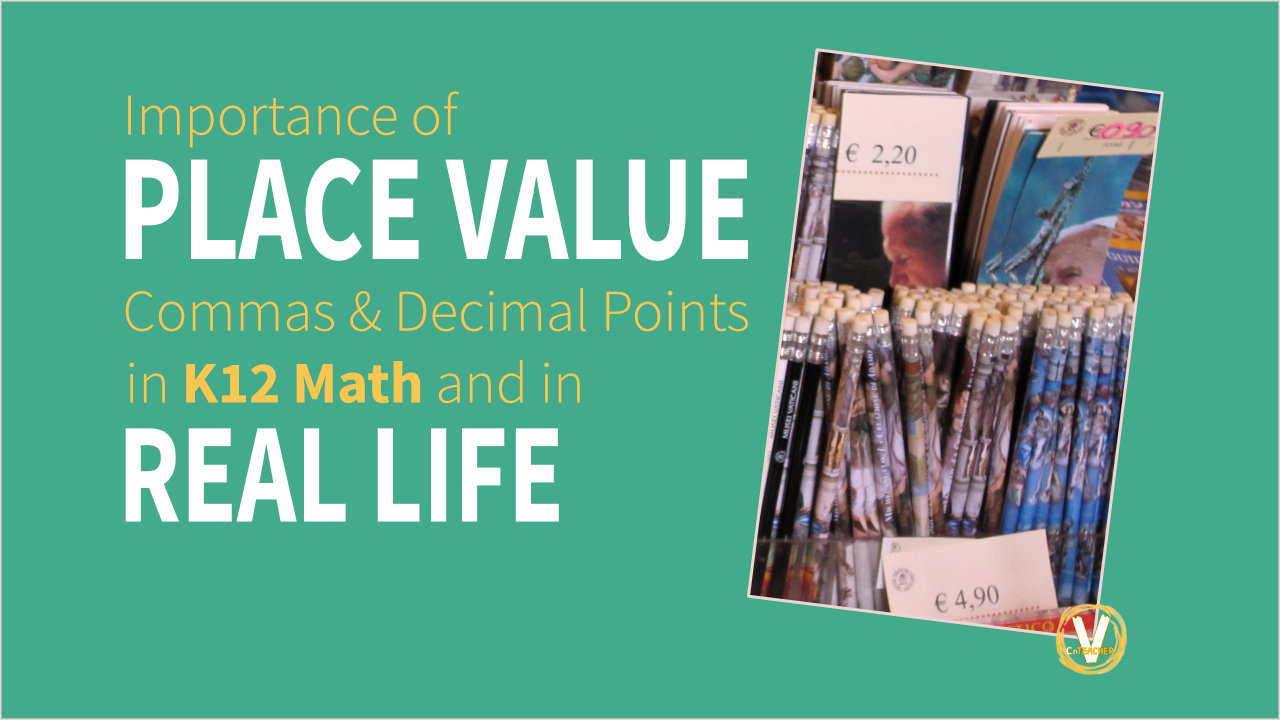What will happen if you misread a number? If you thought it was 50 instead of 5? If you asked for 100 cents instead of dollars? Or if you counted 6 inches instead of 6 feet? In real life, it is disastrous. In the classroom, it will be comical if you and your students are having fun.
Place value is a critical lesson in basic arithmetic.
In order to add, subtract, multiply and divide properly, you have to know the place value of numbers. You can't even read a number properly if you do not know its place value. Try reading 1 with 3 zeroes and 1 with 5 zeroes if you only understand hundreds. It is not possible.

Commas and Decimal Points
To add to the confusion, some of my high school ELLs (English Language Learners) are using commas for decimal points and vice versa. It was only when I visited Italy and saw the price tags of souvenir pencils at the Vatican City when I realized not all countries use decimal points. And yes, that was a picture of the pencils and other souvenir I saw.
A quick research on which countries do and do not made me realize the importance of going back to basics even though I am teaching Algebra and Introduction to Statistics. They always mess up what they encode in their calculators because of their misunderstanding of decimal points. And this makes them give up.
How do you teach Place Value?
Well, it you are teaching smaller kids, [[****place value mats like this one will be useful for Math drills.teaching place value starts with identification of digits: 0 to 9**](https://www.teacherspayteachers.com/Product/Big-Math-Flashcards-Number-Digits-0-to-9-Ready-to-Color-Student-Reference-6064889?utm_source=Hive&utm_campaign=Digits). Once they are aware of all ten digits, then they have to learn what they mean: 0 means nothing, and 8 means you can count 1 to 8 while pointing to each of the eight items. Once they understand what it means, you can introduce tens, then hundreds and so on. Then
But what about high school students who are still confused? Well, the key is to find out what they are confused about without using elementary materials. I know. I was a special education teacher and they will resist any worksheet or materials that they will find "babyish." You can simply ask them to write the price of something as a Do Now activity. For example, show them a picture of a car and ask them to guess the price. From there, you will find out if somebody uses comma instead of decimal point. You can also look at any student who wrote a price that is too low or too high. I will also tell a trivia story about my trip to Italy and finding commas instead of decimal points on the price tag. Hopefully, it will jumpstart a discussion of their own experiences.
One thing is sure, if a student constantly make computational mistakes, try to see if he needs to review place value.
Place Value in School and in the Real World
In the K12 setting, place value is the basis of basic computation. But due to the tremendous amount of materials teachers need to cover, sometimes its importance is overshadowed. One thing is sure, if a student constantly make computational mistakes, try to see if he needs to review place value.
Another common error is conversion. Simple cents to dollars conversion made my HS students give up on problem solving. And don't even mention feet to yard or centimeter to inches. Measurement conversion combined with place value issues will mess up with their ability to solve Math problems in school and in the real world. As a veteran teacher, I know the importance of place value and numerical comprehension. I'll dwell more on this topic in my next posts.
Your Virtual Co-Teacher, Sheila
Disclaimer: All information presented are for educational purposes only and readers are encouraged to do more research on their own. Affiliate links may be used.
Disclaimer: All information presented are for educational purposes only and readers are encouraged to do more research on their own. Affiliate links may be used.